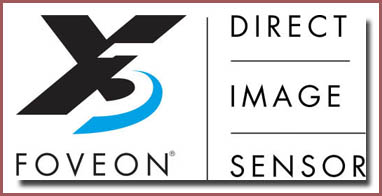
 |
| Home • Reviews • Forums • News 2015 • 2013 • 2012 • 2009 • 2008 • 2007 • 2006 • 2005 • 2004 RSS Feeds • FOV Factor Table • Sensor Sizes | Definitions: A-D • E-H • I-L • M-P • Q-U • V-Z | Sitemap Articles • Archived Websites (Pre-DigitalDingus): D100 Lounge • E-10 Club | Contact |
| Foveon X3F Raw File Format Now Supported In Adobe Photoshop CS |
| February 10, 2004 |
Foveon Inc., a technology leader in high-quality digital capture products, announced today that Adobe Systems Incorporated will provide Foveon X3F raw file format support in the Photoshop CS Camera Raw plug-in. Foveon X3F files are the raw format files from digital cameras that incorporate the Foveon X3 direct image sensor. Foveon X3 direct image sensors are the only image sensors that directly capture color in three layers, just like color film. "Adobe's Photoshop software is the core of virtually every digital image editing system used on personal computers today. Their decision to support our raw file format reflects the market's growing desire to use the complete color capture provided by Foveon X3 based digital cameras," said Federico Faggin, Foveon's CEO. Support of the Foveon X3F raw file format will enable users to browse, import, and edit X3F images directly from the Photoshop application. This integrated support simplifies the digital image workflow, benefiting the owners of Foveon X3-based digital cameras and other uses of X3F files. Digital cameras that output the X3F file format include: the Sigma SD9 dSLR (digital Single Lens Reflex camera), the Sigma SD10 dSLR, and the newly announced Polaroid x530 point-and-shoot digital camera. The Photoshop Camera Raw plug-in is supported in Adobe PhotoShop CS. Support for X3F raw-format files is expected to be available from Adobe in the third quarter of 2004. About Foveon and X3 Direct Image Sensors Since its establishment in 1997, Foveon has focused on the development of image capture technologies and products for digital cameras. The company's X3 direct image sensors are the world's only image sensors that directly capture red, green, and blue light at every point in an image. The design of the X3 direct image sensor leverages the natural color separation property of silicon. When silicon is exposed to light, blue light is absorbed near the surface, green light is absorbed deeper, and red light is absorbed deepest within the silicon. In Foveon X3 direct image sensors, pixels are placed at these corresponding depths in the silicon to detect the red, green, and blue light that has been absorbed. This stacked-pixel design ensures that all of the color is captured at every point in an image. In contrast, the traditional CCD and CMOS image sensors used in today's digital cameras capture only one color per pixel location and must mathematically interpolate the two colors not detected. This interpolation process results in false colors, reduced resolution, and color artifacts. |
| Home • Reviews • Forums • News 2015 • 2013 • 2012 • 2009 • 2008 • 2007 • 2006 • 2005 • 2004 RSS Feeds • FOV Factor Table • Sensor Sizes | Definitions: A-D • E-H • I-L • M-P • Q-U • V-Z | Sitemap Articles • Archived Websites (Pre-DigitalDingus): D100 Lounge • E-10 Club | Contact |